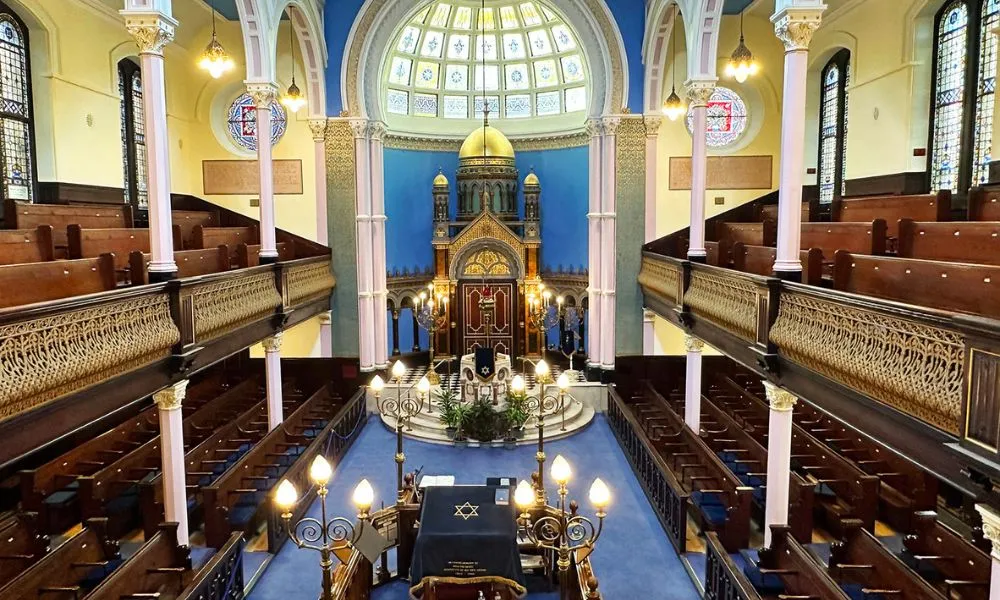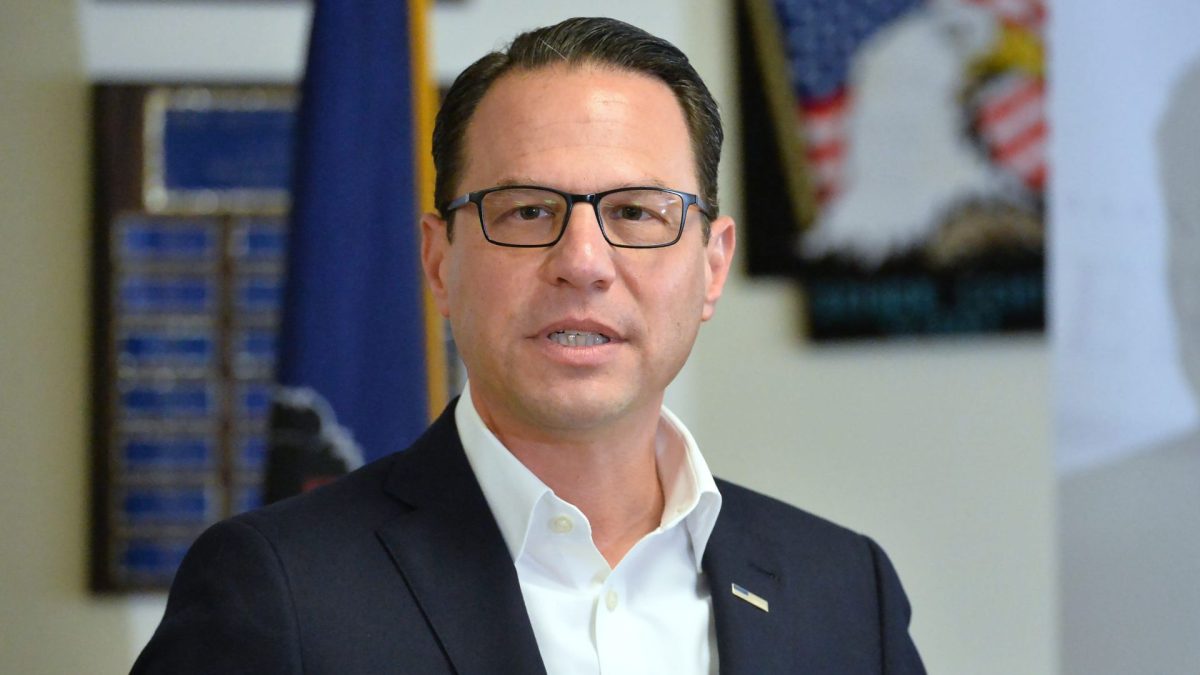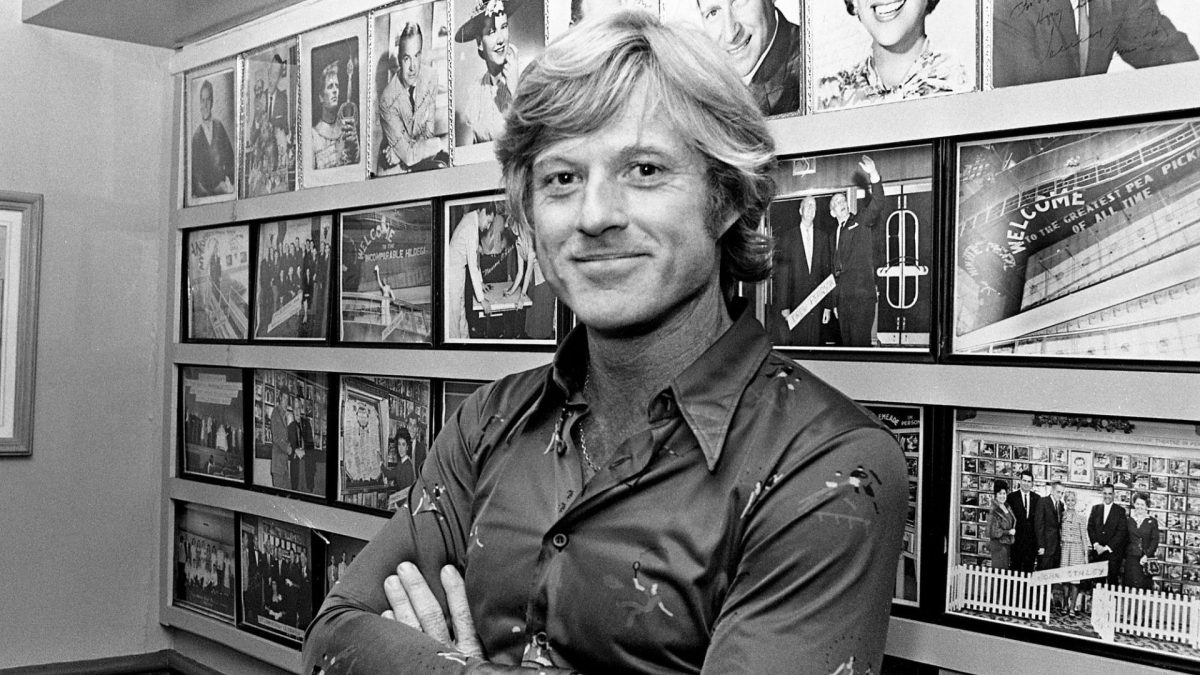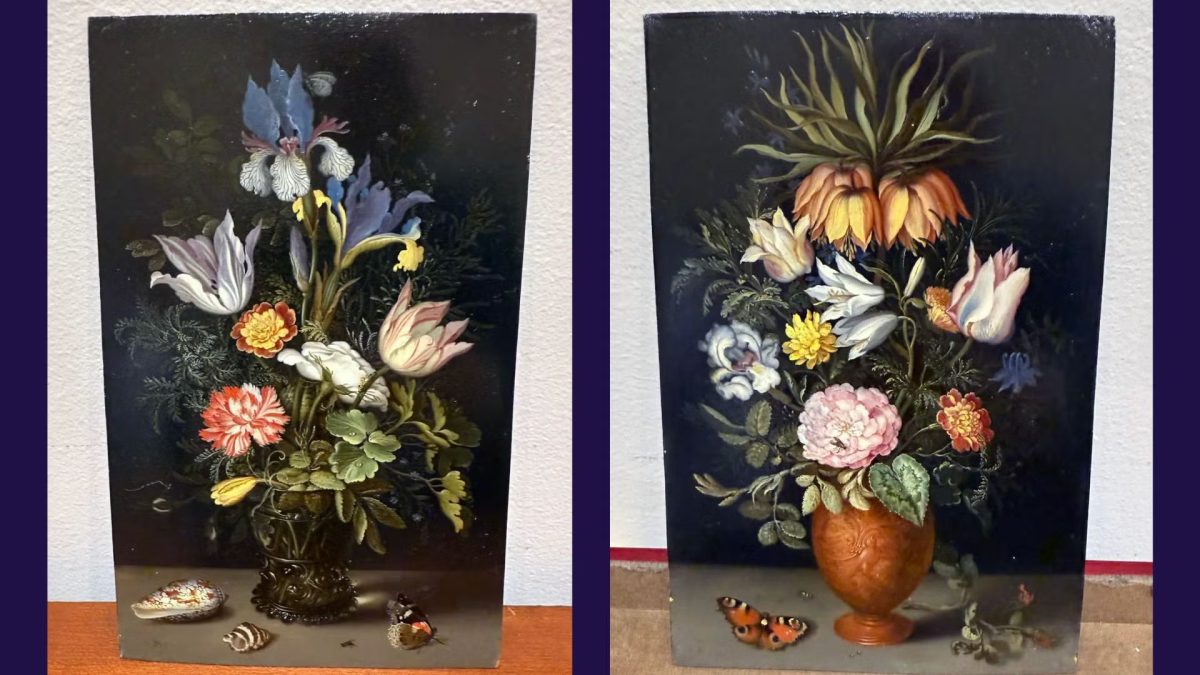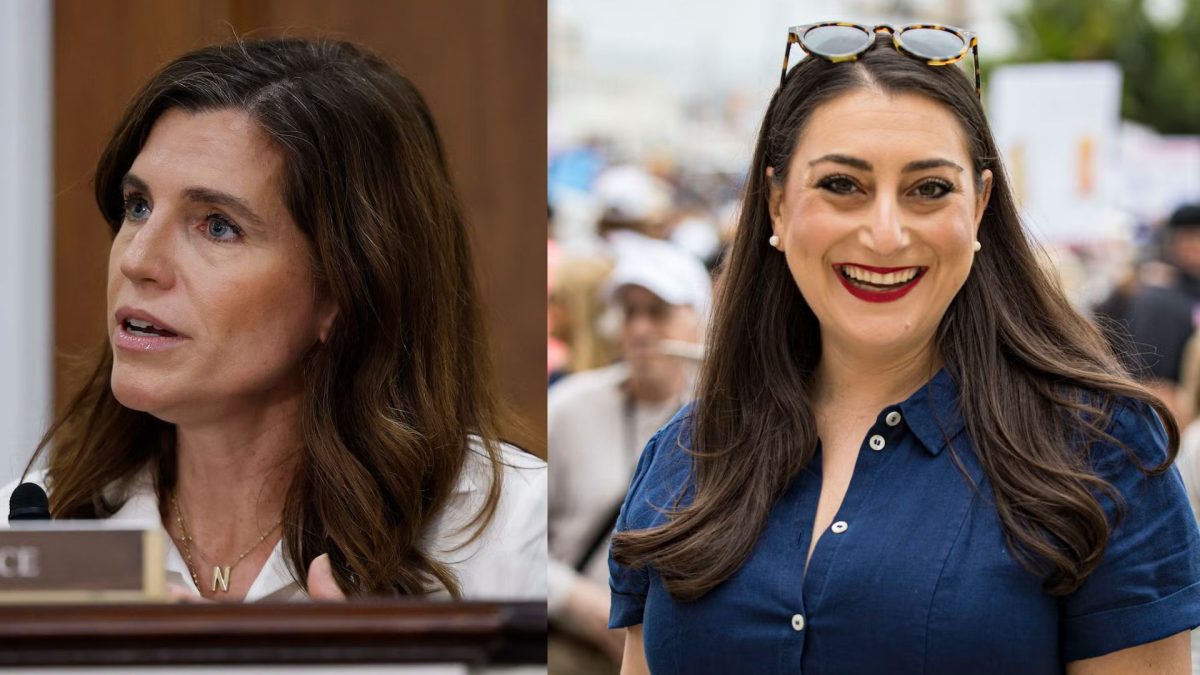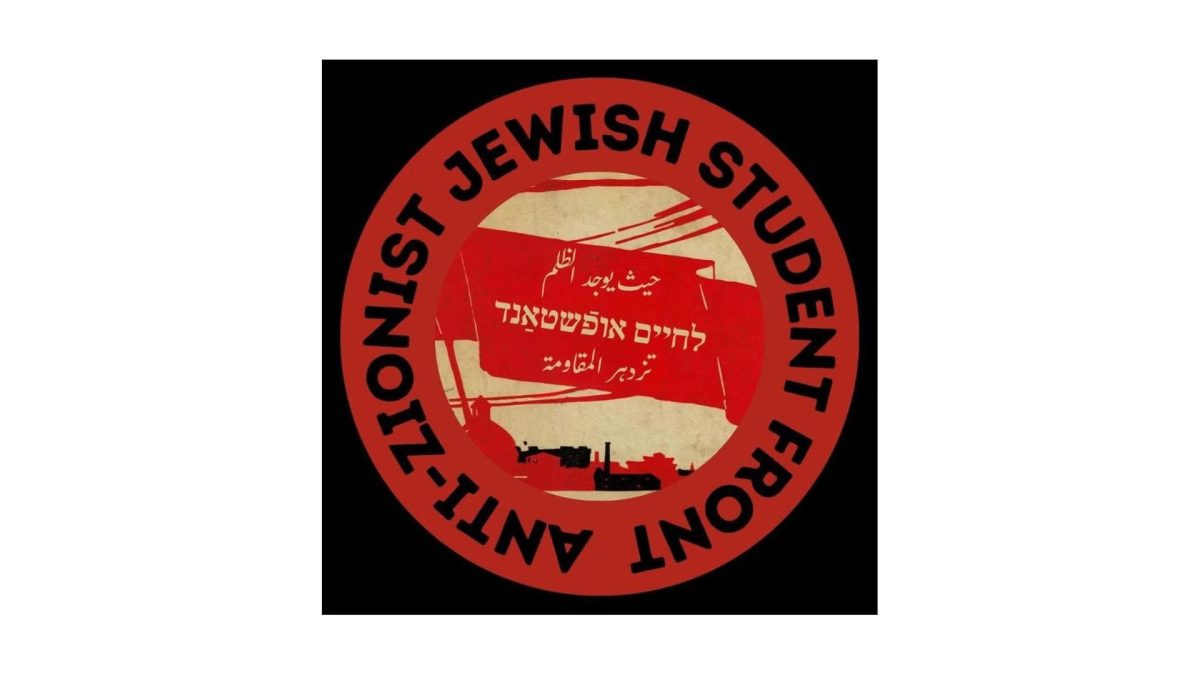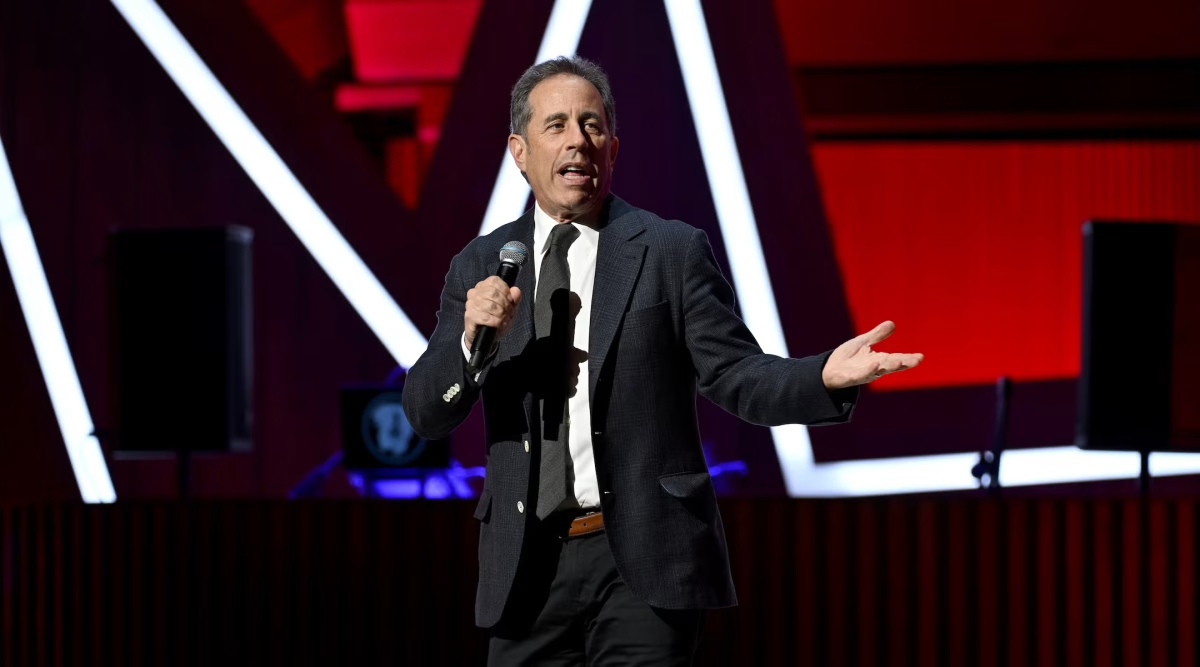Moment Magazine, founded in 1975 by Elie Wiesel and Leonard Fein, is an independent publication exploring Jewish life, politics, and culture. It offers award-winning journalism, insightful commentary, and diverse perspectives on contemporary issues. Moment also hosts community programs, projects, and events to foster dialogue, combat antisemitism, and promote understanding. Subscribe here.
This story was originally published on Moment.com. Sign up for the Moment Minute.
On the eve of Yom HaShoah, I boarded a local train from Glasgow to Giffnock, a nearby suburb and home to Scotland’s largest Jewish community. For decades, the heart of that community has been the Giffnock Newton Mearns Synagogue, Scotland’s largest Orthodox congregation, with a membership that hovers around 800.
I had been invited to the evening service by congregant Michael Tobias, the president of the Jewish Genealogical Society of Great Britain. He’s a Glaswegian (a Glasgow native) and also the former vice president of JewishGen. The synagogue was packed with Ashkenazim whose ancestors—just like those of my Manhattan congregation— emigrated from central and eastern Europe in the mass emigration in the late 19th century. My relatives got on a boat for America, while theirs boarded one for England, their final stop, Scotland. Their melodic accents and deep sense of Yiddishkeit didn’t surprise me. Their strong allegiance to Scotland and the seamless marriage of their two cultures did. But kosher kilts? Tartan kippahs? You bet! (More on that later.)
ADVERTISEMENT

Jews have had a presence in Scottish life since the 1600s. “In 1691, a Jewish trader, David Brown, applied to city fathers for permission to live and trade in Edinburgh,” says Dr. David Grant, board member of the Edinburgh Hebrew Congregation (EHC). “That Brown was welcome here is a tribute to the enlightened nature of Edinburgh society.”
Michael Tobias, a scholar of everything Scottish and Jewish, confirms that when Jews first came, they were well accepted. “A lot of Jewish students came in the early days, mostly medical students. They chose Scotland because studying at Oxford or Cambridge demanded swearing allegiance to the Church of England.” Blame that on a 1581 royal fiat by Queen Elizabeth I. But Scotland would have none of that: the country’s religious tolerance continued to beckon Jewish communities to develop for centuries to come, and neighborhoods sprang up in Glasgow, Edinburgh, Aberdeen, Dundee and other cities, in numbers sufficient to sustain a vibrant Jewish life.
By 1911, around 7,500 Jews were crowded into the Gorbals neighborhood within Glasgow’s immigrant quarter, where Eastern European arrivals joined German Jewish families. Many found jobs in Glasgow’s tobacco factory, owned by the Austrian Jewish cigarette entrepreneur Jacob Kamush. Others opened businesses such as bakeries, food markets, kosher butchers and even kosher guesthouses. Not everyone wanted to put down roots—some Jewish migrants to Scotland merely planned to learn English and earn enough money to finance passage on the second leg of their voyage across the Atlantic. But most Jews planning a temporary stay never left.
Only a mile and a half from the old Gorbals shtetl and nearly a vertical climb up one of Glasgow’s steepest streets is the majestic Garnethill Synagogue. It is Scotland’s first “purpose-built” synagogue, completed in 1879, an example of high Victorian architecture. Within its entranceway are huge plaques with special prayers for the Royal family and for the State of Israel. The synagogue hosts Glasgow’s Orthodox community with regular services, classes and cultural events.
ADVERTISEMENT
The Scottish Jewish Archives Centre (SJAC) is housed within Garnethill’s walls, preserving and documenting 200 years of the Jewish Scottish experience. The SJAC maintains a huge library of records and literature in English and Hebrew including early photographs, oral histories, and community and burial information. It has preserved files of hundreds of Holocaust-era arrivals from the Kindertransport, doctors fleeing Germany, refugee artists, rabbis and cantors as well as camp survivors.
Harvey Kaplan, SJAC co-founder and director, estimates that under 6,000 Jews still live in Scotland, down from a peak of 20,000 in the 1950s and 1960s. “Many descendants of Scotland’s Jews who arrived a hundred years ago relocated to London or Manchester or moved to the United States, Canada, Australia and Israel,” says Kaplan.
Kaplan is a member of the Giffnock Newton Mearns Synagogue, a recent merger of the last two Orthodox shuls in the suburbs (there is one Reform synagogue as well). Tucked behind foliage on a busy suburban street, its current building opened in 1969, though it has been a hub for all things Jewish since it was founded (originally as the Giffnock Hebrew Congregation) in the 1930’s. The shul’s congregants fared very well in Glasgow. Adam Henderson, founder of Kosher Scotland Tours, tells me that his grandparents were married there. “My grandmother was one of the first female lawyers in Scotland and my grandfather, who had landed in Ireland, became a doctor in Glasgow,” says Henderson.
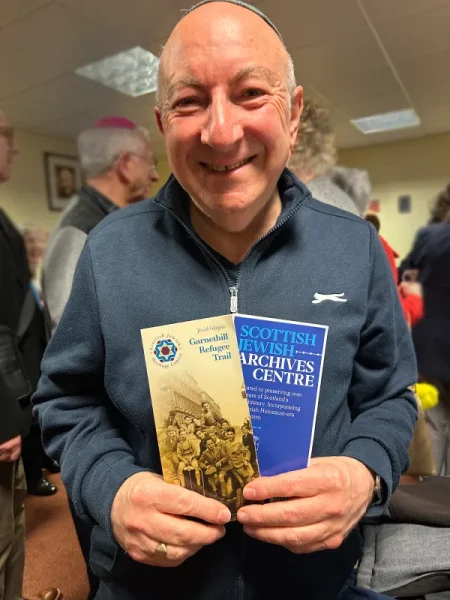
During a tour of the Synagogue, its chairman, Michael Goodman, points out its magnificent stained-glass windows, fiery with late afternoon color. A level below, daily services are held in the Beit Midrash. There is also a communal mikvah, one of two in the country. But the heart of the community is Rabbi Moshe Rubin who hails from the United States. He’s been the spiritual leader of the synagogue for almost thirty years. Any mention of his name brings overwhelming praise and anecdotes about his spirited leadership.
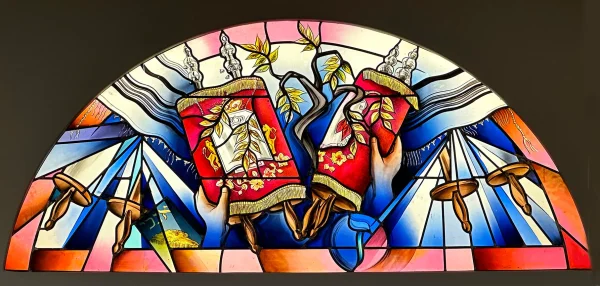
But Jewish communal life in Giffnock isn’t limited to the shul: Calderwood Lodge, founded in1962, is Scotland’s only Jewish nursery and primary school. It focuses on Jewish culture and the Hebrew language, but is open to all denominations as well as non-Jews. Among the 150 students, there are Asian, African and other nationalities, all studying Scotland’s historic Battle of Culloden and the Roman siege of Masada!
The early Glasgow Jews made their final home in the Jewish Enclosure of the Necropolis, a leafy Victorian cemetery with 50,000 graves in the shadow of Glasgow Cathedral. The Jewish Enclosure was established in 1832 as a separate area outside the boundary of the main cathedral graveyard and contains 50 burial sites. Its first resident was Glasgow quill maker, Joseph Levi. The Glasgow Hebrew Burial Society along with Glasgow City Council has restored the Jewish Enclosure along with the Glenduffhill Cemetery, Scotland’s biggest Orthodox Jewish cemetery, with 8,000 graves.
Glasgow (and suburb Giffnock) wasn’t the only destination of Jewish immigrants. Edinburgh, too, harbored a Jewish community. This one was transformed by the arrival of Rabbi Dr. Salis Daiches in 1918.
Born in Lithuania and schooled in Leipzig, Daiches earned a PhD in philosophy focusing on Scottish philosopher David Hume. Says Dr. Grant of the Edinburgh Hebrew Congregation (EHC), “Rabbi Daiches’ mission was to unite the disparate Jewish communities of Edinburgh. He believed and taught that you could live an Orthodox life while being a part of the wider Jewish and non-Jewish community.” At the time, that was a revolutionary concept.
The present EHC was formed during the ministry of Rabbi Daiches. Today, the imposing synagogue, built in 1932, is a tribute to Daiches’ early leadership. Its 120 members fill the red brick building and welcome Jewish tourists who arrive for Shabbat services.
“Thanks to Daiches,” continues Grant, “the Jewish community has always been held in high esteem by Scots. There has been very little antisemitism in Scotland, and that is Rabbi Daiches’ legacy.“
Despite some pro-Palestinian organizing since Israel’s invasion of Gaza, Edinburgh’s historically welcoming spirit continues to appeal to Jewish students seeking a top university education. In fact, the Edinburgh University Jewish Society is now one of the largest in the United Kingdom, with over 200 members. In the past few years, there’s been a surge in the Jewish student population, and some are active in the synagogue. “Believe it or not, our congregation is growing. We have young families, students, a cheder and children preparing for their bar mitzvah,” says Grant.
On a recent Sunday afternoon visit, the synagogue was buzzing with activity. Teenagers were mentoring younger religious school students and a bar mitzvah celebration was being organized. “We have green shoots here!” says Grant, referring to the youthful future of the synagogue.
So we’re all wondering: What’s a kosher kilt? The backstory is, Jews didn’t get their own clan tartan until 2016 when Scottish-born Rabbi Mendel Jacobs designed one. The Jewish tartan is blue and white, (alluding to both the Scottish and Israeli flags), with stripes of white, red, silver and gold—colors chosen for their biblical reference. As per the Jewish law of shatnez, wearing clothing with a mix of wool and linen (the common blend for kilts) is prohibited. Now, 100% wool kilts are being made just for the Jewish clan. The bigger question is, what’s worn under them?



